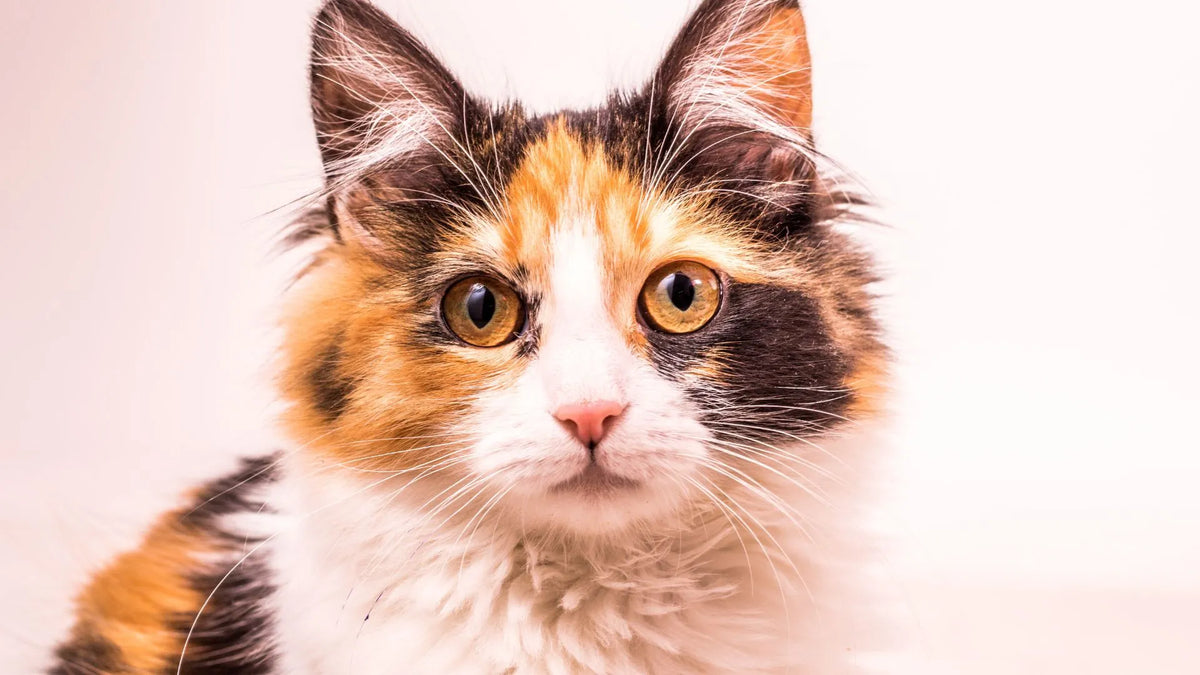In 24 cities

Petting Your Cat: A Comprehensive Guide to Understanding and Connecting with Your Feline Friend
|
|
Time to read 6 min
Get product availability and delivery timelines based on your location.
Are you sure you want to delete this address?
Help us ensure a smooth delivery
Help us ensure a smooth delivery
SIZE GUIDE
|
|
Time to read 6 min
Petting your cat isn’t just a fun way to bond; it’s an essential part of building trust and understanding your furry friend. Whether you're a seasoned cat owner or a new pet parent, knowing how to pet your cat properly can enhance your relationship and contribute to your cat's overall well-being. This guide will walk you through everything you need to know about how to pet your cat in a warm, loving way that respects their unique personality.
Petting your cat is one of the simplest yet most rewarding experiences you can share. However, understanding how to do it right is essential for a harmonious relationship between you and your feline friend. Let’s dive into the nuances of petting your cat effectively and respectfully.
Cats are unique creatures with diverse personalities, and their preferences for petting can vary significantly. While many cats enjoy being petted, others may be more reserved or indifferent.
Once you've established that your cat is in the mood for some affection, follow these steps for a smooth petting session:
Before you pet, extend your hand slowly toward your cat, allowing them to sniff it. This gesture helps your cat get comfortable with your presence. A relaxed approach shows your cat that you respect their space.
When your cat gives you the green light (like rubbing against your hand), you can start petting. Use gentle, smooth strokes, focusing on the areas that most cats enjoy:
Pay close attention to your cat's body language while you pet them. If they lean into your hand, purr, or continue to rub against you, you’re on the right track! However, if you notice any signs of discomfort, like a twitching tail or a sudden withdrawal, stop petting immediately.
It's crucial to know where NOT to pet a cat. While you may think you’re offering comfort, areas like the belly, legs, or paws can be sensitive. Many cats feel vulnerable when their stomach is touched, and this can lead to defensive behavior. If you're unsure, stick to the head, cheeks, and chin.
Understanding the preferred petting zones can make your cat’s experience more enjoyable. Here are the key areas where most cats like to be petted:
Not every cat enjoys being petted, and that’s perfectly okay. Here’s how to navigate that situation:
If your cat consistently avoids being petted or reacts negatively, respect their boundaries. Not all cats are affectionate, and forcing contact can damage trust.
Sometimes, a cat may not like being petted due to stressors in their environment. Ensure they have a safe space where they can retreat and feel secure.
Instead of petting, try bonding with your cat through play. Use toys like feather wands or laser pointers to engage their instincts. This can foster a positive relationship and may lead to increased comfort with physical contact over time.
If your cat suddenly becomes averse to petting, it may indicate discomfort or health issues. Pay attention to changes in behavior, as they might be signs of underlying health problems.
When your cat is happy, you might notice:
Conversely, be wary of the following signs that your cat is unhappy or uncomfortable:
If your cat shows persistent signs of aggression or discomfort during petting sessions, it may be time to seek professional guidance. Here’s when to consider reaching out:
If sudden behavioral changes occur, or if your cat seems to be in pain when touched, consult your veterinarian. They can rule out underlying health issues that may be affecting your cat’s comfort.
If your cat’s aversion to petting seems rooted in anxiety or trauma, consider consulting a cat behaviorist. They can provide tailored strategies to help your cat feel more comfortable with petting and human interaction.
Connecting with fellow cat owners through forums or local groups can provide insights and shared experiences. They may have valuable advice on handling similar situations.
Petting your cat is an essential aspect of building a loving and trusting relationship. By understanding your cat’s preferences, body language, and comfort zones, you can create a positive petting experience that strengthens your bond. Remember, every cat is unique, so take the time to learn what works best for your furry friend. Your patience and love will not only enhance your connection but also enrich your cat's life.
Petting frequency depends on your cat's personality. Some cats enjoy frequent affection, while others prefer it occasionally.
Respect their space and try again later. If the behavior continues, consult a professional.
Yes! Petting can reduce stress and promote feelings of happiness for both you and your cat.
Yes! Positive interaction can help calm anxious cats but always pay attention to their comfort levels.
Engage them with play and respect their boundaries. Gradually introduce petting at their pace.
By following these guidelines and remaining attentive to your cat’s needs, you can enjoy a fulfilling and affectionate relationship with your feline friend. Happy petting!
Team Supertails
2 item in cart
₹10,360

